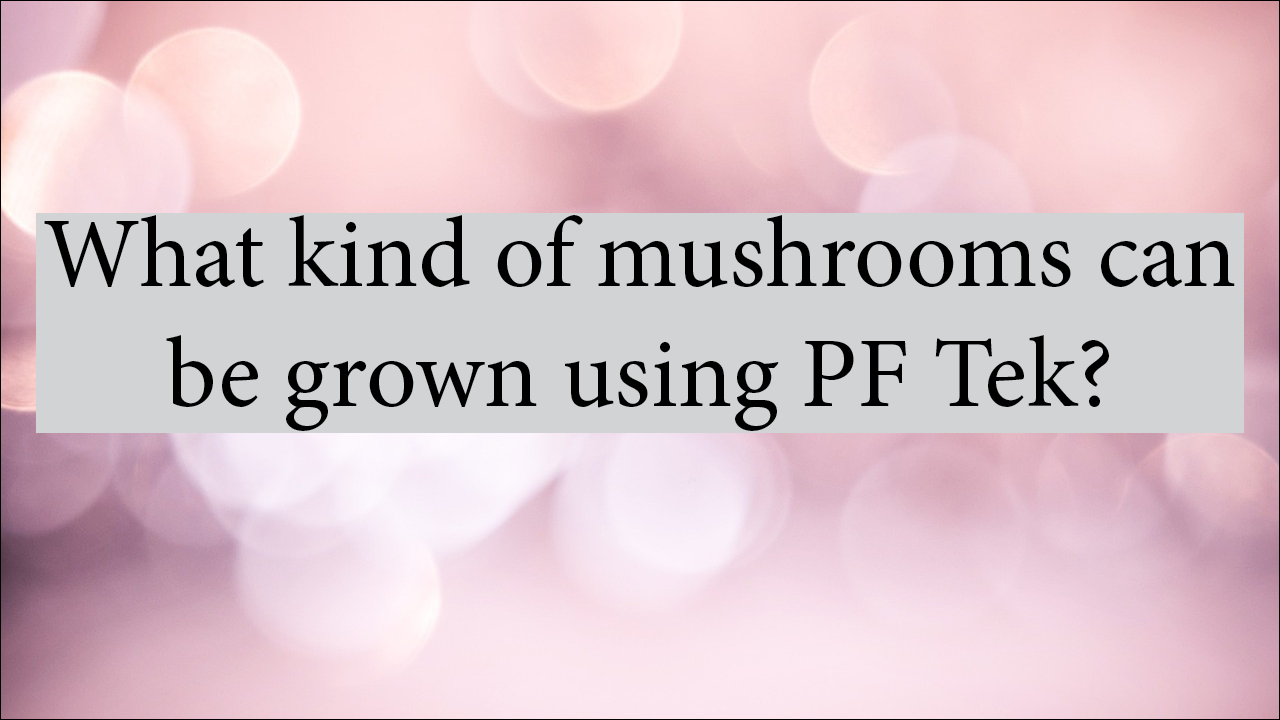Picture this: a fascinating world hidden beneath the soil, where intricate networks of mycelium give birth to a diverse array of mushrooms. Whether you’re an amateur enthusiast or a seasoned researcher, the cultivation of mushrooms has captivated the curiosity of many. One method that has gained popularity is the PF Tek (Psilocybe Fanaticus Technique), a simple yet effective approach for growing various types of mushrooms. In this comprehensive guide, we will delve into the realm of PF Tek and explore the kinds of mushrooms that can be successfully cultivated using this technique.
Unveiling the Potential of PF Tek
PF Tek, developed by Robert McPherson (also known as “Psilocybe Fanaticus”), is a cultivation method designed to simplify the process of growing mushrooms. It’s particularly appealing for beginners due to its straightforward approach and minimal equipment requirements. The technique focuses on using a nutrient-rich substrate, typically composed of brown rice flour and vermiculite, to encourage mycelium growth and subsequent mushroom formation.
The PF Tek method involves several steps:
- Substrate Preparation: A mixture of brown rice flour, vermiculite, and water is combined to create a nutrient-rich substrate. This mixture serves as the foundation for mycelium growth.
- Jars Inoculation: The substrate mixture is packed into sterile glass jars and then sterilized to eliminate any competing microorganisms. After cooling, a spore syringe or mycelium sample is introduced into the jars.
- Mycelium Colonization: The introduced spores or mycelium sample will germinate and gradually colonize the substrate. This process can take several weeks, during which mycelium networks develop.
- Casing Layer (optional): For certain mushroom species, a casing layer of vermiculite can be added once the substrate is fully colonized. This layer helps regulate humidity and encourages mushroom growth.
- Fruiting Conditions: Once the mycelium has fully colonized the substrate, the jars are introduced to fruiting conditions, which include a drop in temperature and an increase in humidity and fresh air exchange. This signals the mycelium to transition into mushroom formation.
- Harvesting: As mushrooms grow and mature, they are ready for harvest. Proper harvesting techniques ensure the best quality and yield.

Mushrooms Amenable to PF Tek
While PF Tek was originally developed for cultivating Psilocybe cubensis, a species known for its psychoactive compounds, it has been adapted for growing a variety of other non-psychoactive edible and medicinal mushrooms as well. Some of the mushrooms that can be successfully cultivated using the monotub tek method include:
- Psilocybe cubensis: As the pioneer species for PF Tek, Psilocybe cubensis remains a popular choice among enthusiasts. Its unique properties have sparked interest in cultivating it for personal use.
- Oyster Mushrooms (Pleurotus spp.): Oyster mushrooms, valued for their culinary attributes and potential health benefits, can also be grown using the PF Tek method. Their rapid growth and vibrant colors make them an attractive choice.
- Lion’s Mane (Hericium erinaceus): Known for its distinctive appearance and potential cognitive benefits, Lion’s Mane can be cultivated using PF Tek. Its cascading, icicle-like structures are captivating.
- Reishi (Ganoderma lucidum): Reishi mushrooms, revered for their potential immune-boosting properties, can be grown using the PF Tek method. Their shiny, reddish-brown caps make them easily recognizable.
FAQs about PF Tek and Mushroom Cultivation
Q1: Can PF Tek be used to cultivate other mushroom species besides Psilocybe cubensis?
A1: Yes, PF Tek can be adapted for other mushroom species, both edible and medicinal. Variations in substrate composition and environmental conditions may be necessary to accommodate different species’ requirements.
Q2: Is PF Tek suitable for commercial cultivation?
A2: While PF Tek is excellent for beginners and small-scale cultivation, it may not be the most efficient option for commercial purposes. Commercial operations often require larger-scale techniques that maximize yield and streamline production.
Q3: Can I use pre-made substrate jars for PF Tek?
A3: Yes, some suppliers offer pre-made substrate jars, which can save time and effort. However, ensuring proper sterilization and quality control is crucial for successful cultivation.
Q4: How long does it take to see mushrooms using PF Tek?
A4: The time it takes for mushrooms to appear varies depending on factors such as species, temperature, humidity, and inoculation method. Generally, it can take anywhere from a few weeks to a couple of months.
Q5: Can I experiment with other substrate materials in PF Tek?
A5: While brown rice flour and vermiculite are the standard substrate materials, experimentation with other materials like coir or straw is possible. Keep in mind that different materials may require adjustments to the cultivation process.
Cultivating Curiosity and Exploration
The PF Tek method has opened up a world of possibilities for aspiring mushroom cultivators. Whether your interest lies in growing Psilocybe cubensis or exploring the diverse realm of edible and medicinal mushrooms, the simplicity and adaptability of PF Tek make it an excellent starting point. As you embark on your journey into the fascinating world of mycology, remember to stay curious, attentive, and patient. The world beneath the soil is waiting to reveal its wonders, one mycelium thread at a time.
Hygiene and precision are crucial in mushroom cultivation. Master these aspects with our PF Tek resources at https://ucangrowmushrooms.com/.



No Responses